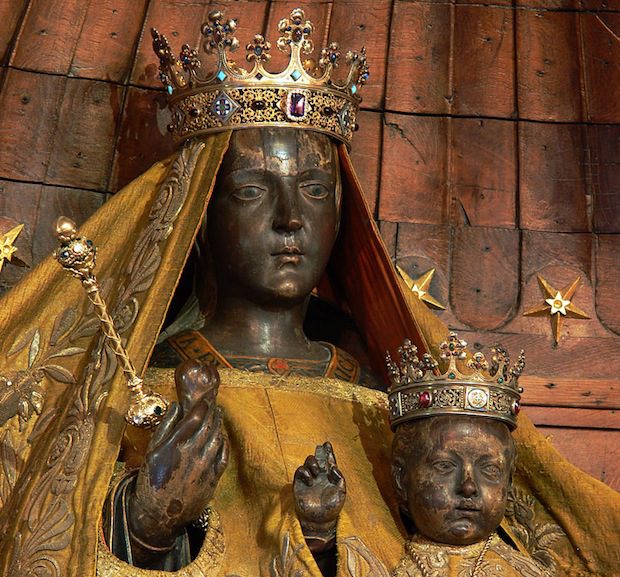The Desecration of Chartres

When I was last in the cathedral of Chartres, I saw a lot of scaffolding — the apse was full of it, and you couldn’t get close — but I did not realize what was going on. I thought they were cleaning the place. It turns out that they are — get this — painting it. Martin Filler was there recently, and was scandalized:
Carried away by the splendors of the moment, I did not initially realize that something was very wrong. I had noticed the floor-to-ceiling scrim-covered scaffolding near the crossing of the nave and transepts, but had assumed it was routine maintenance. But my more attentive wife, the architectural historian Rosemarie Haag Bletter—who as a Columbia doctoral candidate took courses on Romanesque sculpture with the legendary Meyer Schapiro and Gothic architecture with the great medievalist Robert Branner—immediately noticed that large areas of the sanctuary’s deep gray limestone surface had been painted.
The first portion she pointed out was a pale ochre wall patterned with thin, perpendicular white lines mimicking mortar between masonry blocks. Looking upward we then saw panels of blue faux marbre, high above them gilded column capitals and bosses (the ornamental knobs where vault ribs intersect), and, nearby, floor-to-ceiling piers covered in glossy yellow trompe l’oeil marbling, like some funeral parlor in Little Italy.
How could this be happening, and why had we heard nothing about it before?
More:
In this part of the cathedral one can already determine how the lighter wall colors change our perception of the incomparable stained glass, whose effect is hugely diminished by their new surroundings. Whereas the old, age-darkened masonry heightened the intense colors of the windows, the new paint subverts them. As Adrien Goetz wrote in Le Figaro last month (in one of the very few critical accounts of the overhaul in France), the new effect is like “watching a film in a movie theater where they haven’t turned off the lights.”
Take a look at the Filler piece, and see the before and after photo of the famed Black Madonna. She and the Christ Child now look like a piece of Baroque marzipan. Unbelievable.
You can’t blame the Church for this wreckovation; I’m fairly sure that the Chartres cathedral belongs to the State, as does Notre Dame de Paris.
Back in 2009, the Independent published an upbeat report on the repainting, which had just begun. Excerpt:
Mr Fresson [the historian overseeing the renovation — RD] expects some visitors to Chartres to be taken aback – maybe even angered – by the transformation. “There is no doubt that we will lose something, even if we gain a great deal,” he said. “The sense of mystery, the sense of the passing ages, which you receive when you enter the dark interior of today will be replaced by something fresher and much more dynamic.”
Yes, we cannot have a sense of mystery. Freshness and dynamism, that’s the ticket. Good Lord. You expect this in America, but in France?
I am grateful that I was able to see the cathedral as it was. My children will live their entire lives without that privilege.
(Via Micah Mattix’s daily arts & culture digest Prufrock. Subscribe for free; you’ll be glad you did.)
Subscribe for as little as $5/mo to start commenting on Rod’s blog.